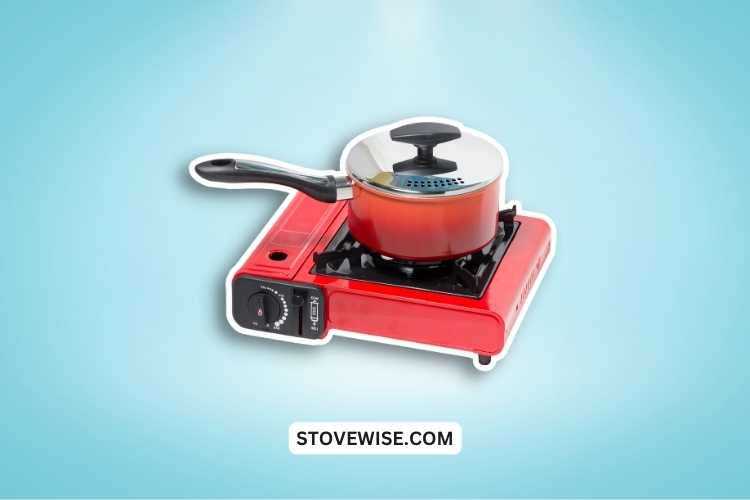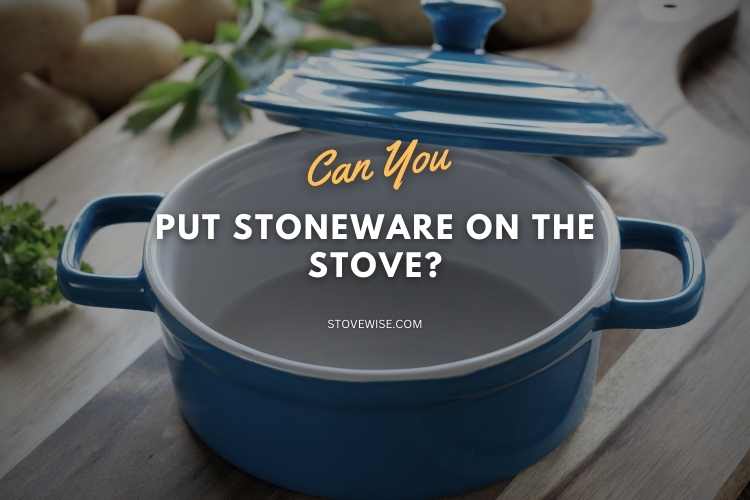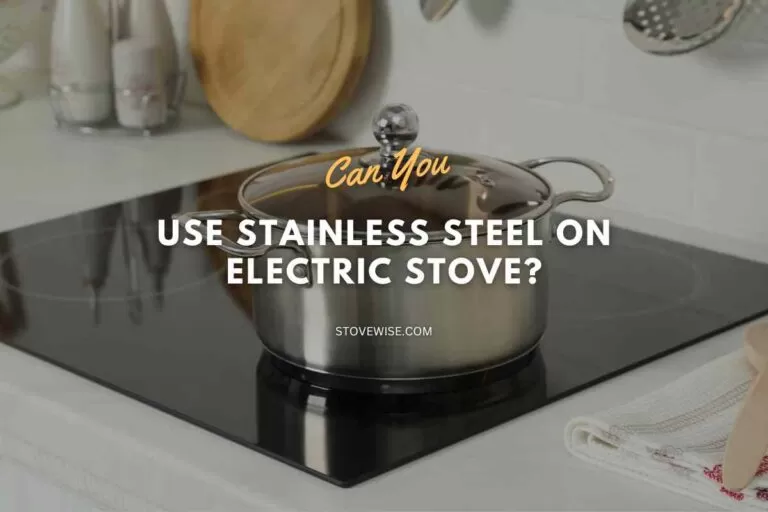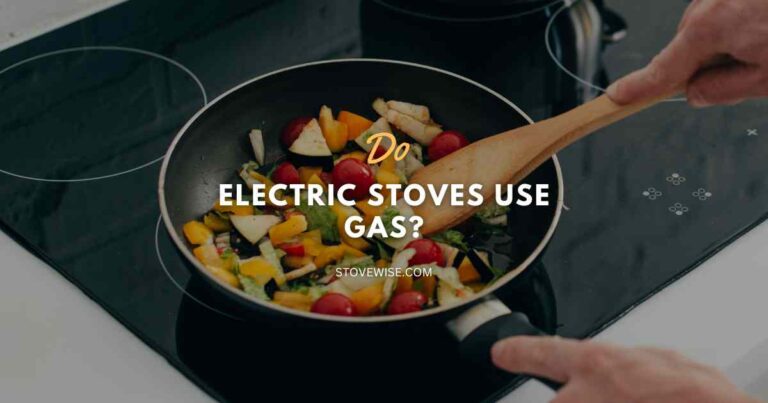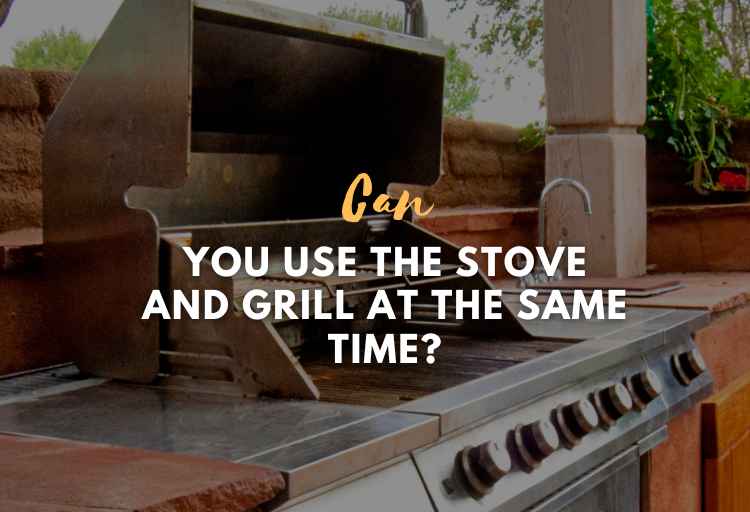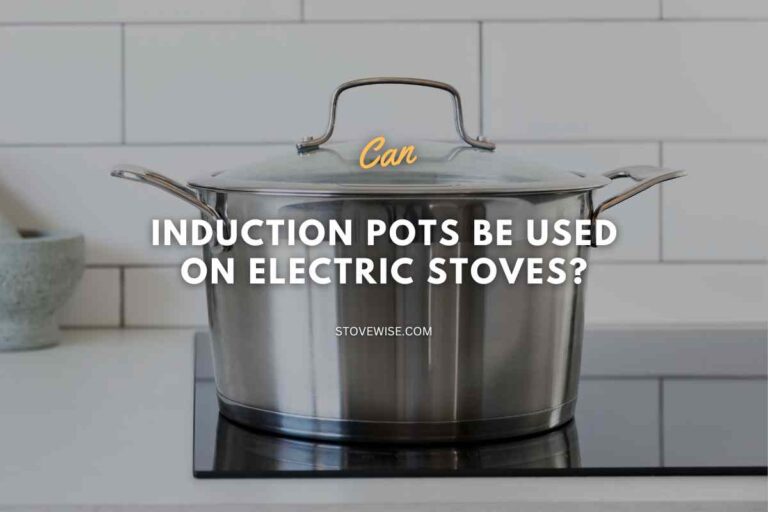Can You Use Butane Stove Indoors?
As urban dwellers seek compact and portable cooking solutions, butane stoves have gained popularity. However, using these stoves indoors raises safety concerns and warrants a closer examination.
Can You Use Butane Stove Indoors?
You can use a butane stove indoors, but it’s crucial to ensure proper ventilation. Butane is a colorless and highly flammable gas that produces carbon monoxide and carbon dioxide when burned. It’s important to note that butane stoves are primarily designed for outdoor use.
When using them indoors, it’s vital to have adequate ventilation, such as opening a window, to prevent the buildup of carbon monoxide. By ensuring good airflow, you can safely enjoy the convenience of using a butane stove indoors.
In this guide, we’ll explore the key factors to consider when deciding if a butane stove is a suitable option for indoor use.
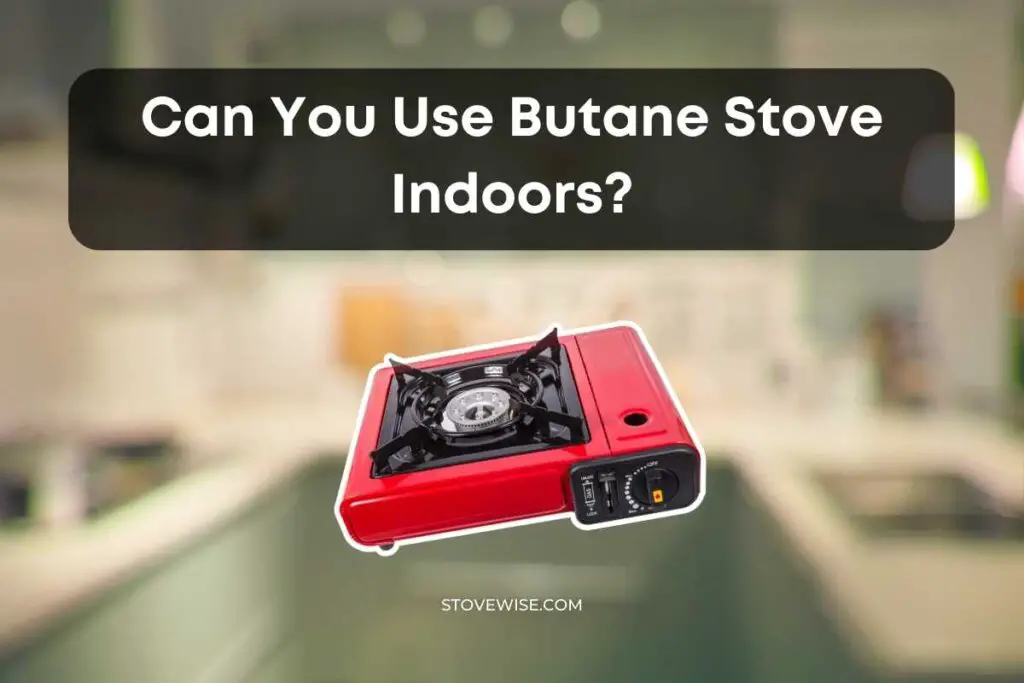
Contents
- Can Butane Stoves Be Used Indoors Safely?
- Considerations When Using Butane Stove Indoor
- Why Avoid Butane Stoves in Tents?
- Are Butane Fumes Harmful?
- Do Butane Burners Emit Co?
- How to Ensure Proper Ventilation Indoors?
- What Risks Are Associated with Indoor Butane Stove Use?
- Is Butane Safer Than Propane?
- How Do Butane Stoves Compare to Other Appliances?
- What Regulations Guide Indoor Butane Stove Use?
Can Butane Stoves Be Used Indoors Safely?
Butane stoves can be used indoors safely if users take the necessary precautions and follow established guidelines. Ensuring proper ventilation is crucial to prevent the build-up of carbon monoxide and other harmful byproducts from combustion.
Selecting the best butane stove with built-in safety features, such as flame failure devices and pressure regulators, is essential to minimize accident risks.
When setting up the stove, it’s important to place it away from flammable materials and on a stable, heat-resistant surface.
Proper storage of butane canisters, regular maintenance of the stove, and exercising caution while using it is also vital to maintaining a safe environment.
Considerations When Using Butane Stove Indoor
When using butane or propane stoves indoors, several factors play a crucial role in ensuring safety and efficiency. These factors can be categorized into subheading sections, as outlined below:
Ventilation
Adequate airflow is essential to prevent the build-up of carbon monoxide (CO) and other harmful combustion byproducts. Proper ventilation can be achieved by opening windows or using exhaust fans when operating the stove.
Safety Features
Opt for butane stoves with built-in safety features, such as flame failure devices that cut off the gas supply if the flame goes out, or pressure regulators that control gas flow. These features can help minimize the risk of accidents.
Location and Placement
Position the stove away from flammable materials, curtains, or combustible surfaces. Ensure it’s placed on a stable, heat-resistant surface to prevent it from tipping over or causing burns.
Fuel Storage
Store open butane canisters in a cool, dry, and well-ventilated area, away from heat sources and direct sunlight. Proper storage minimizes the risk of leakage, explosions, or fires.
Proper Maintenance
Regularly inspect the stove for any damage or wear and replace faulty parts promptly. Keep the stove clean to ensure optimal performance and prevent any potential hazards due to clogged burners or fuel lines.
Supervision and Usage
Never leave the stove unattended while in use, and ensure it’s turned off when not in use. Be cautious when handling hot cookware and avoid overcrowding the stove to prevent accidents and spills.
Why Avoid Butane Stoves in Tents?
It is crucial to avoid using butane stoves inside tents due to the significant safety risks involved. Firstly, butane stoves pose a serious fire hazard when used in enclosed spaces like tents.
Tents are typically made of flammable materials, and the close proximity of an open flame to the tent fabric increases the likelihood of accidental fires, endangering both individuals and property.
Additionally, butane stoves release carbon monoxide (CO) gas during combustion, which can lead to carbon monoxide poisoning when used in a confined space like a tent.
The limited ventilation in tents can cause the gas to accumulate, leading to potentially life-threatening situations.
Moreover, tents lack proper ventilation systems, which means that using a butane stove inside can trap harmful gases and compromise air quality.
Lastly, the heat generated by a butane stove can damage the tent fabric and weaken its structural integrity, reducing its ability to provide shelter and protection.
Are Butane Fumes Harmful?
Yes, butane fumes can be harmful to human health. When butane is burned or vaporized, it produces fumes that may contain a variety of harmful substances, including carbon monoxide (CO) and volatile organic compounds (VOCs).
Carbon monoxide is a colorless and odorless gas that can be particularly dangerous. Inhaling high levels of carbon monoxide can lead to symptoms such as headaches, dizziness, nausea, and confusion, and in severe cases, it can be fatal.
It is important to note that carbon monoxide is often produced when butane or other fuels are burned in insufficiently ventilated areas.
Volatile organic compounds (VOCs) are gases emitted by various materials and can be found in butane fumes.
Prolonged exposure to VOCs can cause irritation of the eyes, nose, and throat, as well as respiratory issues, headaches, and even long-term health effects.
To minimize the potential harm from butane fumes, it is crucial to ensure proper ventilation when using butane appliances indoors. This helps to disperse the fumes and maintain good air quality.
Additionally, following safety guidelines and using butane stoves or appliances in well-ventilated areas can help reduce the risks associated with inhaling harmful fumes.
Do Butane Burners Emit Co?
Yes, butane burners do emit carbon monoxide (CO) gas during combustion. When butane is burned, it undergoes a chemical reaction that produces carbon dioxide (CO2) and water vapor.
However, if the combustion process is incomplete or there is insufficient oxygen supply, carbon monoxide is also produced as a byproduct.
Carbon monoxide is a colorless, odorless, and tasteless gas that is highly toxic to humans and animals.
Inhalation of high levels of carbon monoxide can lead to carbon monoxide poisoning, which can be life-threatening. Symptoms of carbon monoxide poisoning include headache, dizziness, nausea, confusion, weakness, and in severe cases, loss of consciousness and even death.
To minimize the risk of carbon monoxide exposure when using butane burners, it is crucial to ensure proper ventilation. Adequate airflow helps to dissipate the gas and prevent its accumulation in enclosed spaces.
Using butane burners in well-ventilated areas or open spaces can greatly reduce the concentration of carbon monoxide and promote safety.
How to Ensure Proper Ventilation Indoors?
Ensuring proper ventilation indoors is essential to maintain good air quality and prevent the accumulation of potentially harmful gases, including carbon monoxide.
Here are some guidelines to ensure proper ventilation:
- Open Windows and Doors: One of the simplest ways to promote ventilation is by opening windows and doors. This allows fresh outdoor air to circulate and stale indoor air to exit. Place fans near open windows or doors to facilitate the movement of air.
- Use Exhaust Fans: If your space is equipped with exhaust fans, such as in kitchens or bathrooms, make sure to use them while using appliances that generate fumes, such as stoves or showers. Exhaust fans draw out stale air and bring in fresh air from outside.
- Cross-Ventilation: Create a cross-ventilation effect by opening windows or doors on opposite sides of the room. This allows air to flow through the space, carrying away pollutants and maintaining better air quality.
- Ventilation Systems: If your indoor environment has mechanical ventilation systems, such as HVAC (Heating, Ventilation, and Air Conditioning) systems or air purifiers, ensure they are regularly maintained and in good working condition. These systems help filter and circulate air, improving indoor air quality.
- Avoid Blocked Vents: Ensure that vents, air ducts, and air registers are not obstructed by furniture, curtains, or other objects. Blocked vents can hinder the proper flow of air, leading to inadequate ventilation.
- Natural Ventilation Methods: In addition to opening windows, using natural ventilation methods like skylights or air vents can help facilitate the movement of air and improve indoor ventilation.
What Risks Are Associated with Indoor Butane Stove Use?
Indoor butane stove use carries several risks that must be taken into consideration for the safety of individuals and the environment.
One significant risk is the potential for carbon monoxide (CO) poisoning. Butane stoves produce CO gas during combustion, and if used in poorly ventilated areas, the gas can accumulate, leading to symptoms like headaches, dizziness, nausea, or even death.
Another risk is the potential for fires or burns. Butane stoves involve an open flame, and if not used with caution, they can ignite flammable materials, causing property damage or injury.
Furthermore, butane is highly flammable, and mishandling can lead to accidents or explosions. Additionally, butane fumes can be harmful if inhaled in high concentrations, potentially causing respiratory issues or irritation.
It is vital to understand and mitigate these risks by ensuring proper ventilation, following safety guidelines, and using butane stoves responsibly to minimize the potential hazards associated with indoor use.
Is Butane Safer Than Propane?
Comparing the safety of butane and propane requires considering various factors. While both butane and propane stoves are commonly used as fuels for portable stoves and appliances, they have different properties that affect their safety.
Butane is lighter than air and evaporates more quickly than propane. This property makes butane less likely to linger in an enclosed space, reducing the risk of gas accumulation.
However, butane has a lower boiling point, which means it may struggle to vaporize in colder temperatures, affecting its performance.
Propane, on the other hand, is heavier than air and tends to sink and collect in low-lying areas if there is a gas leak. This can pose a greater risk if not detected promptly. However, propane has a higher boiling point, making it more suitable for use in colder conditions.
In terms of flammability, both butane, and propane are highly flammable gases. It is crucial to handle them with care, follow safety guidelines, and ensure proper ventilation to minimize the risk of fires or explosions.
How Do Butane Stoves Compare to Other Appliances?
Butane stoves are often favored for their portability and convenience, as they are lightweight and easily transportable.
They are commonly used for camping, outdoor activities, or as an alternative cooking solution in small spaces. In terms of efficiency, butane stoves generally provide quick and consistent heat output, allowing for efficient cooking.
However, it’s important to note that butane stoves may struggle to perform optimally in colder temperatures due to the lower boiling point of butane gas.
In comparison to electric appliances, butane stoves offer the advantage of not requiring access to electricity, making them suitable for use in remote locations or during power outages.
On the other hand, electric appliances offer the convenience of simply plugging them in and not having to worry about fuel availability or ventilation requirements.
When considering safety, butane stoves carry certain risks such as carbon monoxide poisoning, fire hazards, or explosions if not used properly. Electric appliances, in contrast, eliminate the risk of combustion and associated fumes.
What Regulations Guide Indoor Butane Stove Use?
Regulations governing indoor butane stove use can vary depending on the jurisdiction and specific safety standards in place.
However, several common regulations and guidelines are often recommended to ensure safe usage:
Manufacturer Guidelines
It is important to follow the instructions and guidelines provided by the manufacturer of the butane stove.
Manufacturers often provide specific recommendations regarding proper ventilation, installation, maintenance, and safe operation of their products.
Local Building Codes
Many jurisdictions have building codes that outline safety requirements for indoor cooking appliances, including butane stoves.
These codes may specify guidelines for proper ventilation, clearances from combustible materials, and other safety measures.
Fire and Safety Regulations
Fire and safety regulations at the local, regional, or national level may include specific guidelines for the use of portable stoves indoors.
These regulations might cover requirements for fire suppression systems, fire extinguishers, or the prohibition of indoor open flames in certain settings.
Camping and Outdoor Regulations
If the butane stove is being used for camping or outdoor activities, there may be specific regulations in place for these environments.
These regulations might pertain to camping areas, national parks, or other outdoor recreational areas, and may address safety measures, permitted fuel types, or restrictions on open flames.

